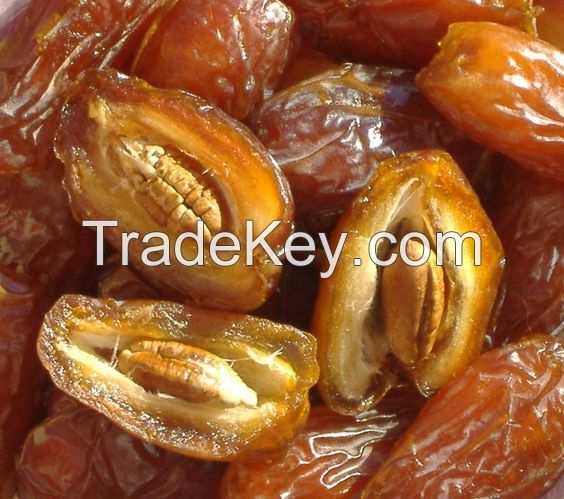Description
The date is the edible fruit of the date palm (Phoenix
dactylifera). It is a fleshy, oblong fruit, 4 to 6 cm long,
containing an elongated core, marked with a longitudinal furrow.
Most often sold in the form of a dry date, it is a very energetic
fruit.
The term "date" derives from the Greek dactulos, finger, in
reference to the shape of this fruit.
Botanically, the date is a berry, because its pericarp is fully
fleshy. The date kernel, wrapped in the membranous endocarp, is in
fact a very hard seed, with horny albumen. Considered as one of the
oldest cultivated plants, the date palm is present mainly in
Mediterranean Africa, in the Middle East and in Asia. The date is
the staple food of many populations. In addition, this fruit has a
religious character for Muslims during the Ramadan period.
Quantified data on world date production, on the price of dates as
well as on exporting and importing countries complete this document
(source: cirad)
In addition to the fruit, which is harvested at 3 different
stages of its growth (fresh, semi-dry and dry), we consume date
"honey" (the juice of the pressed fruit), date sugar and sap sugar
as well as the terminal bud of the palm tree and the heart of the
tree. We also make an alcohol with sap and a coffee substitute with
roasted and ground kernels.
As you
can see from the definitions,
a date is its own fruit, while a prune is really a
plum. In fact, prunes are often
called dried
plums now, in
an attempt to rid the food item of its
negative, old-people connotations.
Both dates
and prunes: Are
sweet and chewy We are one of the largest exporter of high quality
fresh and dry dates in Saouth Africa. We can supply following
varieties
